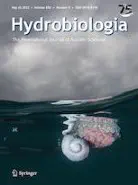Artificial floating islands: a promising tool to support juvenile fish in lacustrine systems

Abstract
Habitat complexity of freshwater ecosystems has been decreasing due to human impacts. Therefore, conservation and environmental management actions have intensified in the recent years. Artificial floating islands (AFIs) are one environmental management action intended to promote the populations of aquatic organisms. In this study, we installed eight AFIs in the littoral area of Lipno Reservoir, Czech Republic and covered them with local wetland vegetation to study the impact of this mitigation action on the fish community. The AFIs were sampled by Point Abundance Sampling Electrofishing (PASE). The AFIs were mainly inhabited by juvenile roach (Rutilus rutilus) and perch (Perca fluviatilis), with densities one to two orders of magnitude higher than in the surrounding control sites. Juvenile catfish (Silurus glanis) and adult northern pike (Esox lucius) were apex predators that were recorded exclusively at AFIs. More fish were captured in AFIs than in control areas (up to 29.2 times more). Even AFIs of simple construction harboured significantly more age 0 + and juvenile fish than control areas, confirming their potential to serve as nursery ground for age 0 + fish in lentic systems. Artificial floating islands can be used to support juvenile fish in the conditions of impoverished littoral structured habitat.